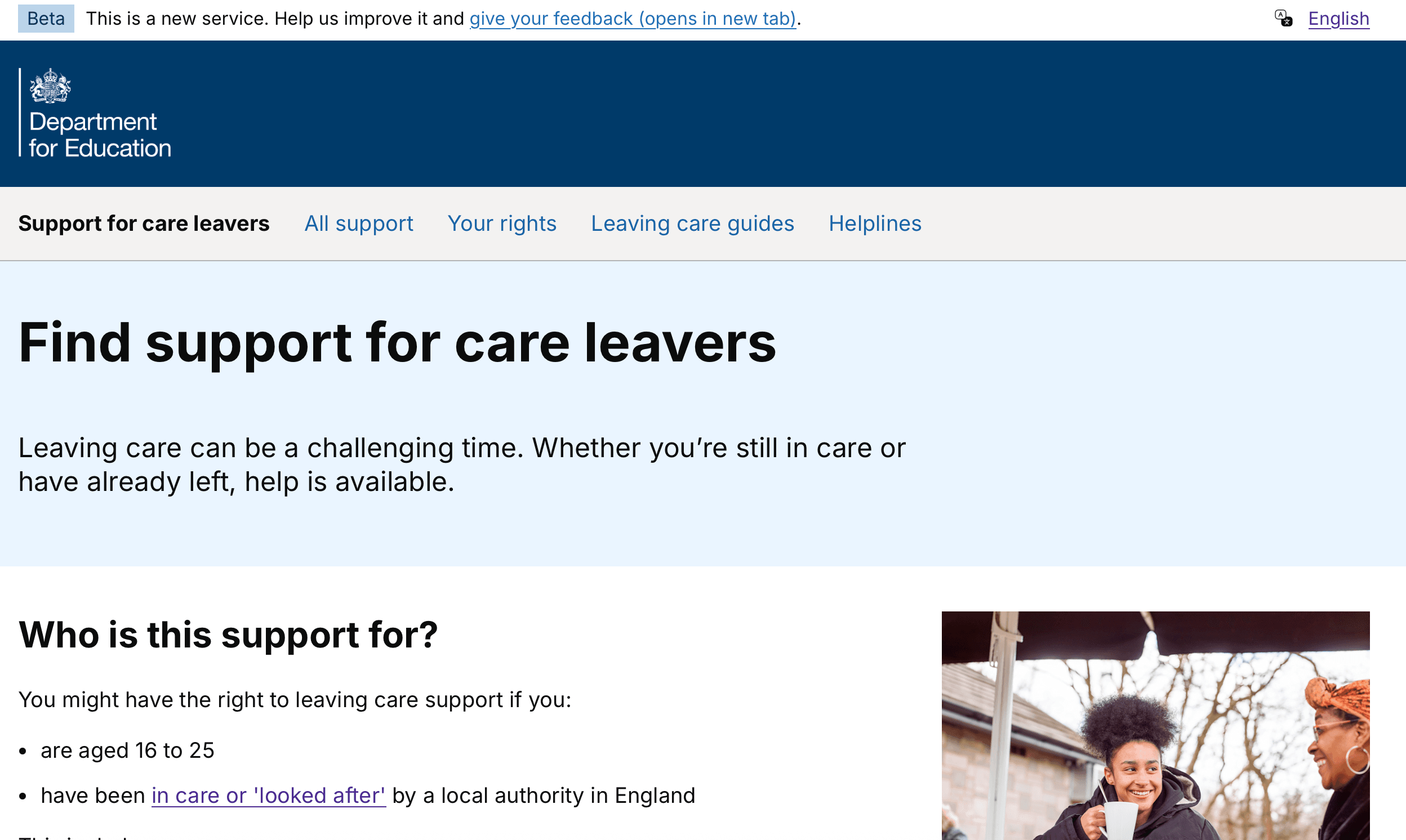Introduction
The CX&D team has undertaken a significant project to support care leavers, launching a new website (‘Support for care leavers’) focusing on young people aged 15 to 25 who are approaching or recently left care.
This includes young people who have been in foster care, residential care, supported lodgings, unaccompanied asylum-seeking children (UASC), and those who have been in custody.
A unique feature of this new website is an A.I. generated translation tool that can translate the content of the site into over 100 different languages.

The Challenge
A significant portion of care leavers, particularly UASC, have English as a second language or speak no English at all.
Approximately 25% of this audience cannot access the digital information and support currently provided. This highlighted the need for an accessible solution.
Care leavers in general are more likely to face unique disadvantages, including:
homelessness: 33% become homeless within two years of leaving care
incarceration: 25% of the prison population are care leavers
education and employment: 38% are not in education, employment, or training (NEET), and only 6% aged 19-21 are in higher education
special needs: 30% of children with over a year of care experience have special educational needs or an education, health, and care plan (EHCP).
From the team’s research it was found that 39% of care leavers didn’t know what options were available to them when leaving care.
The purpose of the new website is to help young people leaving care find information about the support they are entitled to as they transition to independent living.
It also offers vital routes to help and advice from dedicated care leaver services and charities.
The A.I. translation solution
To address the challenge around language, the team implemented an A.I. translation tool to make digital information more accessible.
Its key features include:
More language coverage: using Microsoft’s ‘A.I. Translate’ means the site can offer over 100 languages, providing live translations and ensuring broader accessibility compared to the standard process of offering only 4-5 languages.
Cost Efficiency: the A.I. translator costs £7.70 per 1 million characters, which is significantly cheaper than standard translation services, costing approximately £0.35 per word. This means that on a 10,000-word website our cost is 46p per translation vs standard translator which would cost us approx. £3,500 per translation.

Testing and feedback
The translation function was trialed with UASC in Coventry and Redcar and Cleveland. Despite the chosen tool being of lower accuracy compared to more expensive versions, it still significantly helped these young people understand the content.
Support workers also valued having this functionality, as it aided them in helping young people understand their rights and the support available.
Implementation and future steps
The project is in a 12-month Beta phase and the team plan to utilise tools like Microsoft Clarity to track user behaviour and monitor the usage across the site.
After successfully implementing the A.I. translations on the care leavers website, there is now the potential to expand this as a solution across other DfE services.
Conclusion
The A.I. translation tool for the Support for Care Leavers website represents a significant step towards meeting the specific needs of care leavers.
By leveraging advanced technology, the CX&D team aims to provide more inclusive and accessible support, ensuring that no young person leaving care is left navigating their journey alone.
